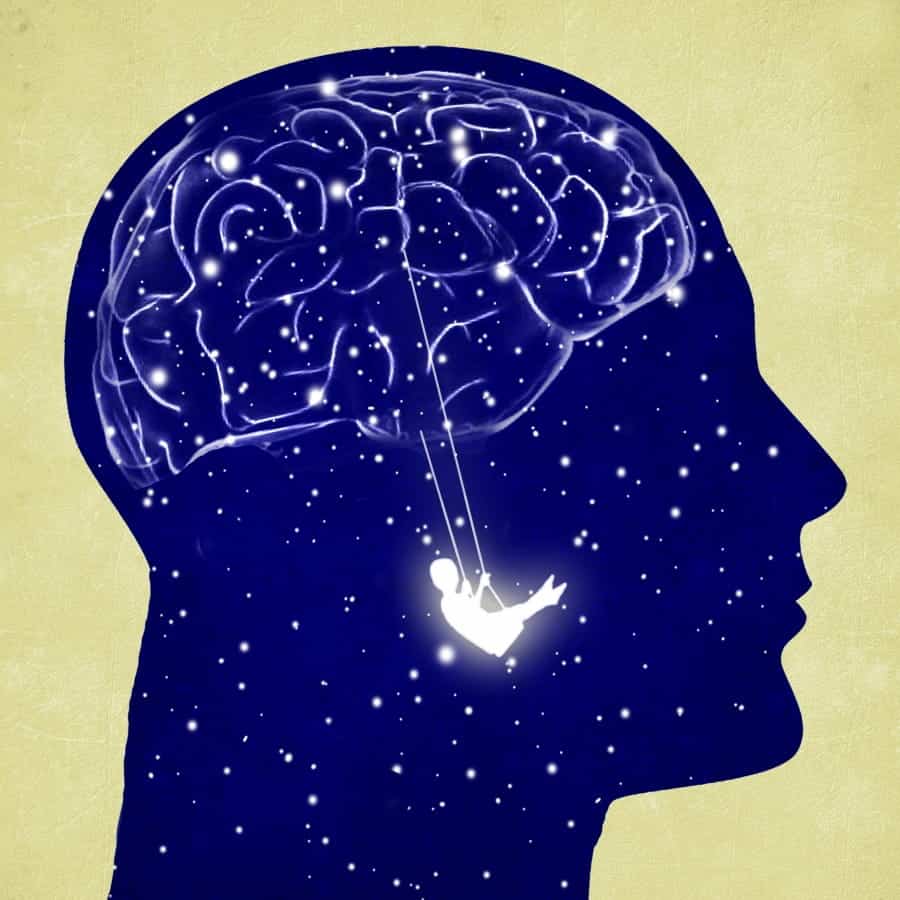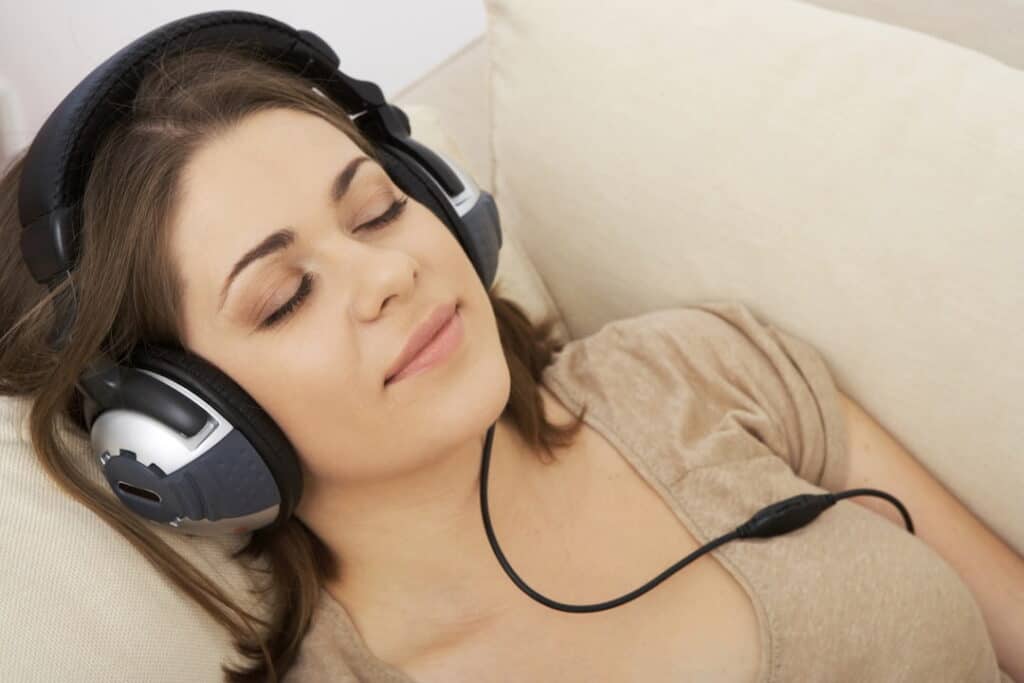Hypnosis trance occurs when a hypnotist uses suggestions to communicate with the subconscious mind of a person, often to help modify behavior and perceptions. The subconscious is an integral part of our mental life. It can influence memory, emotions, motivations, habits, and self-control in your everyday life.
A hypnotic trance should be considered different from other meditative states. Even though at times, it can feel similar, there are significant differences. This type of trance is an interaction with the subconscious mind to affect cognitive processes and behaviors.
For a hypnotic trance to occur, you need a combination of factors that work together.
Hypnosis Downloads
For whatever reason, the hypnosis trance is an elusive state for most people. It’s not easy to achieve it quickly, other people find it difficult or impossible to do so despite many attempts and hours of practice.
If you’re looking for helpful hypnosis audios, Hypnosis Downloads has plenty of them. You can download it on your phone or PC. They also have an app where you can access them. With over 600,000 people having used them, then it’s proof that they work. They have a dedicated customer service team and a 90-day money-back guarantee.
One of the biggest advantages of hypnosis is the fact hypnosis takes you to a state of mind that’s peaceful and calm ensuring you’re happier and healthier.
What is Hypnosis Trance?
Hypnosis trance is when a hypnotist makes the hypnotized individual feel relaxed through hypnosis. A trance can be defined as a state of intense focus, absorption, or attention on some object or activity. It is often used in everyday language to describe something that engrosses your attention. For example, “I was in a trance watching her dance.”

Sometimes people will use trance as a slang term to describe an altered state of the conscious mind or mind-altering experience.
In everyday trances, the person’s level of awareness and control remains unchanged. They continue to be able to think independently and make decisions based on their thoughts and feelings. In hypnosis, a trance alters the level of conscious awareness.
A person’s subconscious mind becomes more open to suggestions from the hypnotist to have a different perspective on things.
The trance state is often used by people who practice meditation and self-hypnosis and those who participate in relaxation exercises, classic examples being yoga or tai chi, where a meditative state of physical and mental relaxation is intended.
What Happens in a Trance?
You can experience a trance in many different ways, depending on the person and how deeply they are affected by the experience. To some, it may feel similar to daydreaming or getting lost in thought.
Others describe it as entering a space with no thoughts or feelings at all.
A shift in brain activity characterizes trance states. Brain waves slow down, causing the brain to stop actively thinking and become less focused on external stimuli. It causes a great deal of feelings of deep relaxation to increase.
Trance can also lead to heightened focus, creativity, and motivation when the subject is immersed in an activity or idea that interests them.
What is the Difference Between Trance and Hypnosis?

A trance is an altered state of consciousness often used to describe meditation or relaxation. A hypnotic trance, on the other hand, is a functional state of heightened focus and concentration. Hypnosis involves an openness to suggestion.
When someone enters hypnosis trance, they can be directed toward specific goals by the hypnotist, giving directions to bring about fundamental changes in the subject’s thoughts or actions.
Suggestions may lead to changes in perception, sensations, mood, and feelings. They can produce temporary changes in the body, such as relaxation, increased sexual arousal, or slowing of time. Suggestions can also create long-term effects on positive thinking patterns, habits, and attitudes.
Self-hypnosis is a way to induce self-trance. It can be done using guided imagery or putting your body into positions that bring about trance-like feelings.
Imagery that causes one to enter trance might include imagining yourself floating on water, feeling like you are sinking into the ground, or envisioning yourself climbing upstairs.
Classic examples and positions that make you enter a trance include sitting cross-legged on the floor, lying flat on your back, or standing with your arms at your sides and palms facing forward.
Methods You Can Use to Put Yourself Into a Trance
You might want to try out a few different things to see what works best for you. Here is one psychological technique that involves sitting in a comfortable position that you can maintain for a while.
Place your hands, palms up, on the tops of your knees, and take a few deep breaths, relaxing further with each one. As your hands float down to rest in your lap, imagine they are filled with intense bright light.

Imagine this light is bringing warmth and energy from your hands into your body. You can focus on breathing slowly and deeply as the light spreads through your arms, legs, and body.
As your body absorbs this energy, continue to relax by imagining yourself standing at the top of a staircase leading down into darkness.
Take one step down with each breath you take—feeling yourself becoming lighter and more relaxed with each downward step.
Keep going all the way down into darkness and stay there as long as you like.
When you feel ready, imagine that you can see the light ahead of you and begin to climb back up those stairs. As you climb, imagine yourself becoming more alert and energetic with every upward step until your reach the top again, where you are fully awake and refreshed.
Does Hypnosis Put You in a Trance?
The answer is no! In hypnosis, a trance is induced by an outside force known as a hypnotist. The subject does not create the trance from their own free will, and they remain aware of what is happening around them at all times.
In self-hypnosis, you become your source of stimulation and induce a trance-state on your own. The trance-like state you generate is a natural one that may happen to you from time to time throughout the day or night.
You can use self-hypnosis (see if self-hypnosis is safe) to create a great deal of relaxed state in which you are more open and suggestible, allowing yourself to become focused on what you want to achieve by entering this state of mind.

What Does a Hypnotic Trance Feel Like?
The best way to determine what a hypnotic trance feels like for you is to experience it. It may be something that happens automatically, such as when watching a movie or daydreaming.
You can also attempt self-hypnosis and see if you feel the same sensations from the trance state.
These sensations can include feeling relaxed or sleepy, feeling like you are far away from what is happening around you, or having feelings of euphoria.
The key to successfully inducing a hypnotic trance can relax the body and mind enough to slow down brain activity. It can be done through breathing exercises, guided imagery, hypnosis music, or simply by practicing experiencing trances so that your body gets used to the feeling of slowing down.
Some people find it helpful to go under hypnosis with a partner by their side. This partner can help induce trance by counting slowly, suggesting that they want you to follow, or simply speaking in a calm, relaxed tone.
You can also use pre-recorded hypnosis sessions if doing this alone is too difficult for you.

The Depth of Trance – The Hypnotic State
There are three different levels of trance—light, medium, and deep. Each class is defined by the depth of the relaxation and suggestibility you feel when in that state.
Light Trance
In a light trance, your muscles are relaxed, but you can still move if needed. You can carry on conversations with ease and stay focused on any task that you are doing.
Your attention is easily directed by the hypnotherapist’s suggestions, although this trance state can be broken if you feel too uncomfortable or sense danger around you.
Medium Trance
A medium trance is also referred to as a somnambulistic (sleep-walking) state. Your body becomes almost wholly relaxed at this level, and you tend to lose awareness of your surroundings.
You can follow the suggestions given by the hypnotherapist even when these suggestions ask that you perform an action that generally would not be possible in your normal state, such as heavy lifting or running.
Deep Trance
The deepest level of trance is often referred to as a somnambulistic state. At this level, you are in a deep, almost trance-like state and can be made to follow suggestions that would typically not make sense to you.
This is the deepest level of hypnosis and, while it allows you to enter an altered state of mind where healing can occur, it is also the most dangerous level.
For this reason, it should only be achieved under the supervision of a trained and experienced hypnotherapist.

What Is Hypnotic Suggestion?
Hypnotic suggestions are instructions given to someone during hypnosis. The reason that these suggestions are so effective is that they bypass the critical faculties of your mind and go directly into your subconscious where they can be acted upon.
Normally, you would reject an instruction offered in this way if only because it conflicts with what you already believe or expect.
Conclusion
Whether you want to try self-hypnosis for relaxation and stress relief or with a partner using hypnosis MP3s, learning more about how hypnosis works will help you get the most out of your experience.
Knowing what you will feel while in a trance state can help you relax and know that the sensations on your body are natural ones and are not dangerous or harmful.
By learning more about hypnosis trance, you can begin to experience this altered state of mind that allows you to tap into your inner strength for personal growth, self-confidence, and physical responses (healing).

